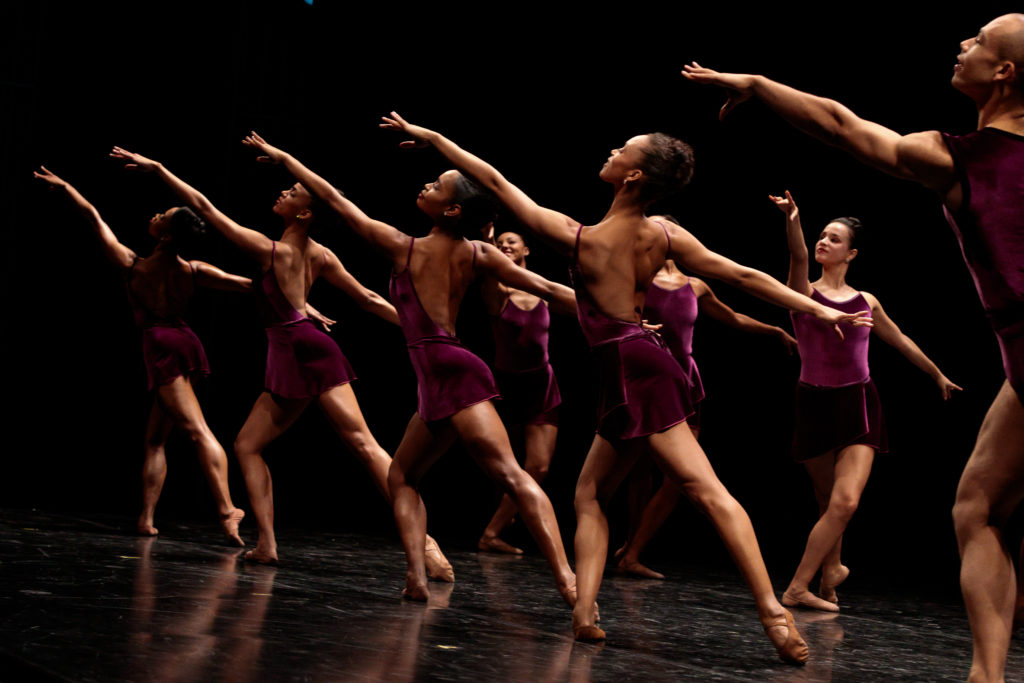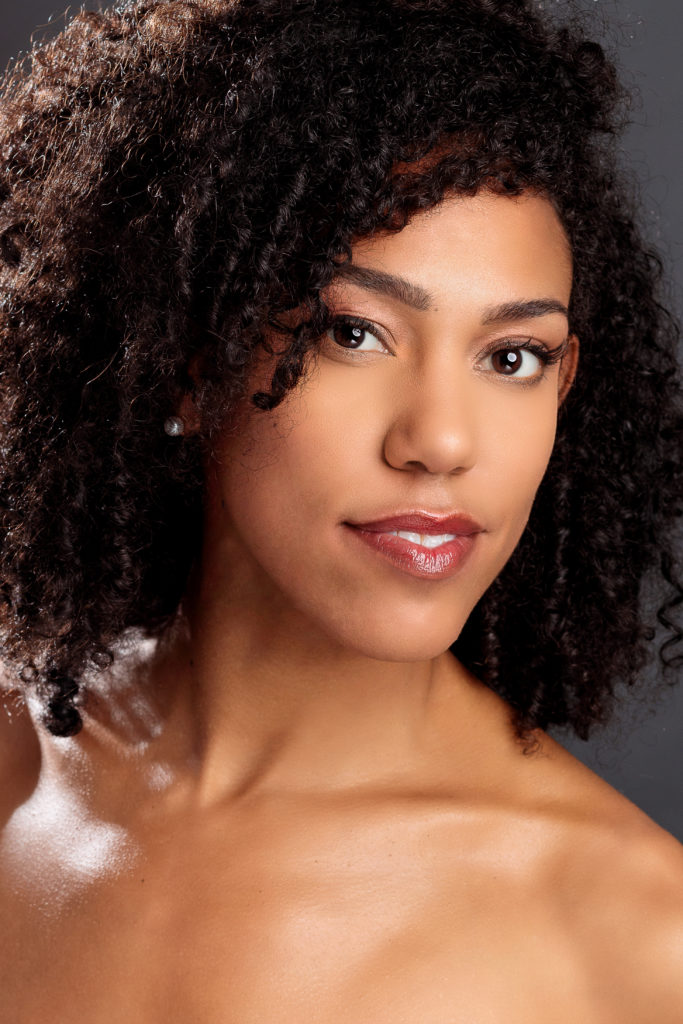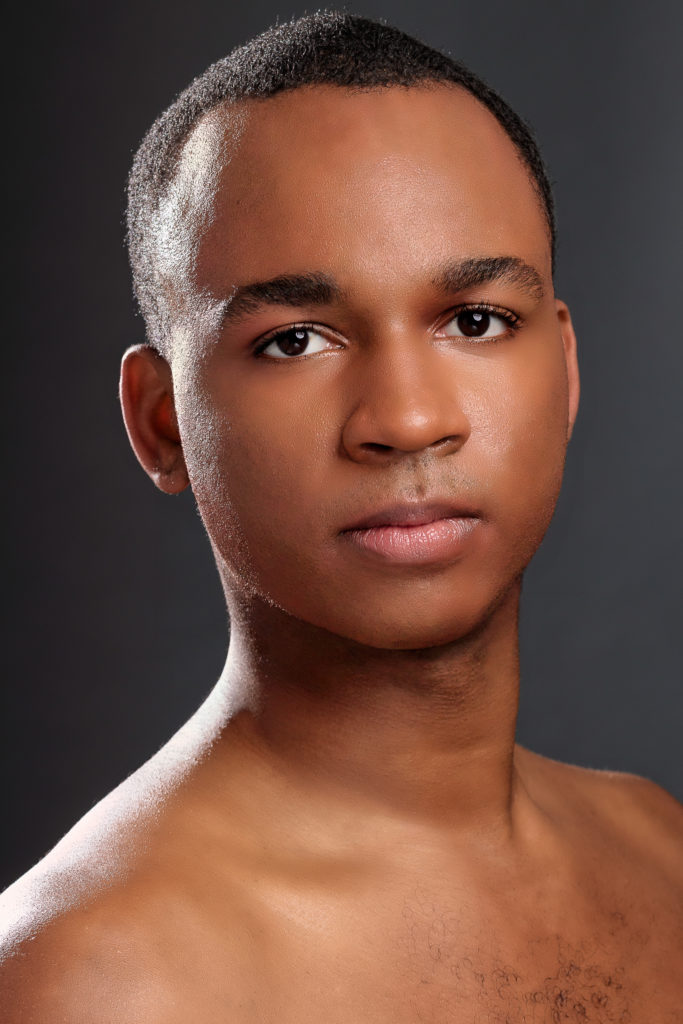
Dance Theater of Harlem
Interview with Lindsey Donnell and David Wright
Conducted by Cameron Williams


Cameron: We will start with a general introduction. How did you end up dancing at the Dance Theatre of Harlem?
Lindsey Donnell: I’m Lindsey, I’ve been in the company for 11 years. I grew up in Texas.
David Wright: My name is David and I am from Indiana. I picked up dance from my mother because she’s a dance teacher.
C: What significance have you seen the Dance Theatre of Harlem have in the community?
L: (Arthur) Mitchell formed the company with the idea of it being classically American. He grew up in Harlem and started the company in response to Martin Luther King Jr.’s assassination. I grew up in Texas so it’s nice to see the wide range of cultural diversity I wouldn’t see otherwise.. We focus on African Americans but we see Cubans, Mexicans, and Brazilians, so much diversity.
D: It’s nice to see a wide range of diversity among dancers.
C: What do you think is the biggest hurdle in trying to get younger people more involved in dance? Specifically, as a member of a dance group that focuses on attracting an audience.
L: I think specifically tackling the eliteness of ballet. A lot of people tend to think it is only for a certain “type” of people, but ballet can be enjoyed by anyone. I definitely see more people of color becoming dancers.
C: What are your favorite places you have traveled to while on tour?
D: Lindsey is so well traveled, she would be best to answer this question.
L: For me, I love being in places that are just a different cultural place. Brazil was amazing. Israel was amazing. Poland was amazing and we were pretty much the only people of color there.
D: I think seeing diversity being brought to other places was really incredible to see.
C: What barriers have you had to overcome as an all-Black dance group?
L: There have been barriers, for sure, historically. They definitely do still exist, but there is hope. I think there is more hope than ever before. There’s a little crack in the window.
D: There’s light shining in.
C: Have you seen the diversity in dance grow since you started? I assume it’s more diverse now than ever. Can you speak on what types of stigmas or issues made it difficult or maybe even easy to become part of this company?
L: Yeah for sure. I think a lot of times, especially in the ballet world, there are things about different muscles, the flexibility of your feet, and the softness of a ballerina. I think those are the barriers that we fight against.
D: How tall or short are you?
L: That! I am very tall!
D: I’m the shortest guy in the company even though I’m 5’10”. A lot of those aren’t even key factors in whether or not you have a place in this company or even this career. Versus in a lot of other ballet companies. There are some ballet companies that have a height requirement on their website, “Don’t even consider auditioning for us if you’re a woman and you’re above the height of 5’ 8”. Don’t even consider yourself here.”
L: I think because it is a visual art form it can be the most aesthetically snob. So, yes, I think in the past ten years Misty Copeland has brought national awareness, which has opened the doors to new people. I think DTH (Dance Theatre of Harlem) as a company returned in 2011 because we have been in existence since 1969. The company part folded for a little bit and then they had the school. So, I think just having us tour around has brought national awareness and I guess, a threshold for intrigue for a lot of dancers of color. So, I would say all of those things in the past ten years have continued to open doors for people of color.
C: So, being a fully Black dance group, how much Black culture goes into your craft? On the contrary, do you see your craft influencing your own Blackness or identity?
D: Definitely, Blackness and Brownness, and dancing in Harlem are the same. A lot of the choreography that people will see is heavily influenced by Black people and our culture, our music, and even the way we approach movement. I think dancing in Harlem is for the culture. It is really lovely because there are not many Black companies around the world. Knowing that our Blackness is not only accepted, but celebrated here means the world to us. Means the world to our audiences that come to see it because there isn’t a space for that. Knowing that this is a space not only in New York but all over the world, we are able to reach more people. To show them that, not only is this okay, but it is amazing. It is something special and deserving to be seen.
L: I think because our resident choreographer and incoming artistic director (Robert Garland), definitely prioritizes showcasing the cultural movement and movement of our culture. That’s one thing he is very adamant about. He’s like, “You know Black cultures around the world, Caribbean culture, we dance as a form of expression.” So whether you are at a barbeque or on the street or something like that, it is not always formalized like in other cultures. Like how we only dance in the theater or in ball gowns. So, I think he uses that kind of movement a lot. He will mix it in with the classical ballet vocabulary. So, he does that in one of the pieces you will see tonight and right now it is called “Higher Ground,” and it is Stevie Wonder music. He uses the actual beats, rhythm, and all of that to inform the choices he makes in the dances that he produces.
C: As professionals, what advice would you give young Black adults starting their careers or finding it? Just in general from your life experiences.
D: There’s space for you.
L: Yeah, know your worthiness. And keep trying because a lot of times, at least for me, when I am met with skepticism, that is often connected with maybe my color, I retreat. Like “Oh, maybe it’s not a good idea.” Or, “I shouldn’t do this.” That self-belief and worthiness to keep going on what you want to do and there’s space for you.




All Photographs were provided by Dance Theatre of Harlem.
Review of Dance Theatre of Harlem Rehearsal
By. Cameron Williams
The Dance Theatre of Harlem is a well-known multicultural and ethnic ballet company. Ending their tour, Stony Brook University hosted one of their performances at the Staller Center on Sunday, May 7th. This tour in particular was special, it being Virginia Johnson’s last tour as artistic director for the company. Artistic director Johnson took over from the original founder, Arthur Mitchell in 2013.
I was fortunate enough to sit in on the dance company’s full rehearsal on the day of their performance. I was even more ecstatic to interview two spectacular dancers, David Wright, and Lindsey Donnell. After speaking to both David and Lindsey, I walked into the theater with an open mind. Growing up I assumed, like many others, that ballet was for those with wealth in the higher class. Much like classical music, I believed it was designated for those with problems I could not afford and a reality I could never picture.
The image I had of ballet dancers was small, elegant, and primarily muscular white dancers. It very rarely involved that of a brown person. Having watched DTH rehearse and meeting David and Lindsey, I was able to break this stereotype for myself. Ballet dancers do come in various complexions, body shapes, and heights.
However, as I walked into the theater, I was taken aback by seeing Black and Brown faces at every corner. Moving in such intricate ways with their bodies, fluid and yet powerful all at the same time. Watching them practice amazed me, the full run-through was even more magical.
Once the lights turned off and the dancers lined up backstage, I knew I was in for a treat. The music started slow, but it quickly built up, and with each beat, a dancer gracefully, flinging across the stage. I was astonished at how precise every dancer was. The timing, the smooth transitions, from one dancer to the next flawlessly executing each move.
Out of all the dances, I most enjoyed the choreography to “200 Press” by James Blake. It perfectly personified all that Lindsey spoke on, how Black culture heavily influences their dance routines. The music was up-tempo, with drums, bass, and ambient electronica in nature. The entire time I thought, this isn’t a classical score I find it boresome. The tempo was familiar, this is music I listen to. The body movements were recognizable yet professionally calculated. I was fixated on every minute of the performance, catching every detail, every dancer’s flair. More importantly, they all complimented each other by expressing such wide-ranging choreography with varying contemporary music selections.
At the end of the rehearsal, David and Lindsey’s words jumped out at me, “There is space for (me).” Seeing the influence Black and Brown cultures have in a space that has historically excluded us, was quite inspiring.
I want to give a special ‘thank you’ to Lindsey and David for taking the time to speak with me. Along with the entire Dance Theater of Harlem company for bringing their extraordinary talent and creativity to our campus. As well as a special congratulations to Virginia Johnson, DTH’s artistic director, on her long and fruitful career. Enjoy retirement!

